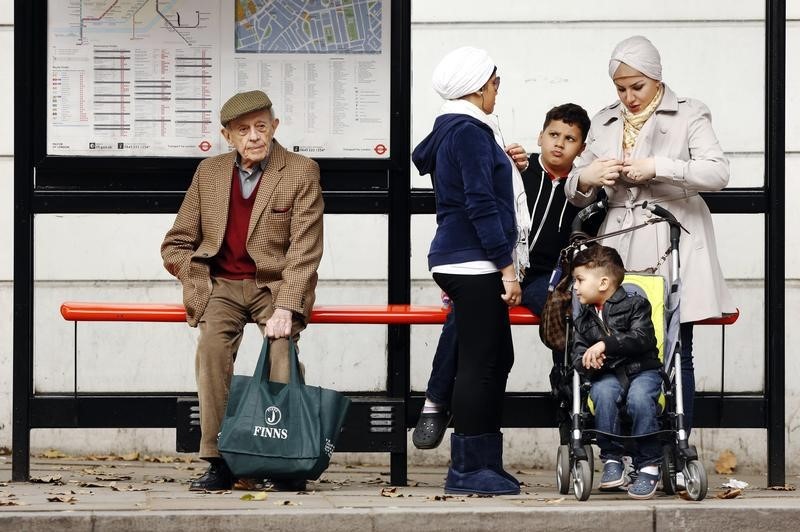Proactive Investors - Skyrocketing energy costs after Russia’s invasion of Ukraine were largely to blame for hiked inflation last year, which peaked at 11.1% in October, the highest level in over 40 years.
Operating costs increased as a result, while strong consumer demand and supply chain difficulties worsened the cost-of-living squeeze.
Inflation is currently sitting at 10.7% but the Bank of England anticipates a fall to pre-Ukraine war levels by early 2024, while the Office for Budget Responsibility expects this to happen earlier.
Elements that determine this fall will likely be similar - gas prices which affect how much businesses face in operating costs, demand trends among consumers and supply chains post-COVID 19.
Energy
Energy is the leading driver of the UK’s high inflation rates, with gas, which effectively governs the overall wholesale price, becoming 129% more expensive between November 2021 and 2022.
Wholesale prices, the amount suppliers pay generators for electricity and gas, have fallen across Europe recently thanks to a mixture of mild weather and relatively full gas storage.
This does not fully affect household bills though, with wholesale prices only accounting for around a third of what households pay in bills.
Networking costs for maintenance of the power grid, operating costs for suppliers and tax are the other factors determining household bills.
Firms also pass on the costs of government-backed schemes aimed at saving energy and reducing emissions for example, which sees added costs to users’ bills.
Year-ahead wholesale rates must “drop substantially for a long period” of time therefore, if billpayers are to see falling prices, according to MoneySavingExpert’s Martin Lewis.
According to UBS, gas will see loosening market balances this year, with “solid supply growth” meeting “modest” demand increases, but prices will still rise.
Gas will likely hit US$4.50 per British thermal unit in mid-2023 and US$5 by the year end, said UBS in a note.
“The energy problems of 2022 – redirected Russian supply, chronic underinvestment in upstream capacity – are here to stay. And with demand recovering in China as well as in emerging markets overall, energy prices should continue to climb in 2023," the bank added.
Energy bills have been capped since October under the government’s energy support bill, which looked to keep costs at £2,500 per household.
New measures being announced in the House of Commons today will see support reduced, however, with chancellor Jeremy Hunt outlining in his Autumn Statement that households could face bills of up to £3,000 from April.
Today’s announcement could also see businesses paying higher rates, meaning prices will remain higher as businesses face increased energy bills.
Food and other goods
Goods prices rose last year off the back of higher energy costs, with food inflation hitting 13.3% in December, up from 12.4% in November.
Driven also by higher animal feed and fertiliser prices, this was the highest monthly rise since the British Retail Consortium began collecting data in 2005.
According to Kantar the “worst has now passed” for food inflation, suggesting price rises have peaked.
Easing prices of raw ingredients, including palm, rapeseed and sunflower oil, should contribute to falling food prices, say SP Angel analysts, alongside other core commodities such as maize and wheat.
Services
Like retailers, many firms faced higher operating costs as the price of raw materials increased due to higher energy and production costs.
Employers across the UK have also faced worker shortages, with many forced to offer higher wages and face hiked costs as a result.
Vacancies in the UK numbered 1.2mln in October, down from 1.3mln in May, with high figures a result of a mixture of factors, including Brexit.
Strikes and industrial action became a common theme in 2022 too, as workers across different sectors sought higher pay in line with inflation.
As a result of such action, 38 of the world's ports were affected, according to SP Angel, which expects labour disruptions to worsen this year.
Global trade
As of December, Russian exports of crude oil and natural gas accounted for 26% and 12% of the global market share, said green energy firm Greenmatch.
Around 18% of the world's wheat also came from Russia, alongside 10% of metals, 7.4% of machinery equipment and 7.4% of chemical products.
Given the long list of sanctions imposed on Russia by western countries after its invasion of Ukraine, the lack of supply of these goods also continues to drive up inflation.
One example is the price cap on Russian oil, which limits European Union and G7 countries to only buying the fuel if it is priced below US$60 per barrel.
Forecasting inflation to fall this year, the Bank of England said: “We don’t expect the price of imported goods to rise so fast as some of the production difficulties that businesses have faced are starting to ease.
“The slowdown in demand for goods and services should also put downward pressure on prices.”
Supply chains will also likely ease throughout this year as countries, including China, continue recovering from the COVID 19 pandemic.
Central banks
Interest rate hikes are set to continue into 2023, as the Bank of England continues its attempts to stem high inflation.
Interest currently sits at 3.5%, with AJ Bell analysts predicting rates to peak at 4.5% this coming summer, before finally falling.
Overall, “inflation remains at the mercy of supply-side pressures while central banks try to suppress demand as much as they can to ease it,” says Mazars chief economist George Lagarias, who suggested the global economy was entering a period of heightened volatility.
